Key Takeaways
- Researchers have reached a milestone in construction for the Gamma-Ray Energy Tracking Array, completing the electronics, computing, and mechanical systems as well as the majority of the sensitive, high-purity germanium detector modules.
- GRETA is now ready to be shipped and installed at the Facility for Rare Isotope Beams, where experiments will study the nucleus and its interactions in real time. Researchers will explore how stars form heavy elements, test the limits of the nucleus, and create and probe hundreds of new isotopes.
- GRETA will reveal new details on the structure and behavior of atomic nuclei. This information will improve our fundamental model of the nucleus and answer big questions in nuclear physics, and could help us improve related fields such as medicine and fusion energy.
Understanding how atoms behave has led to many advances, including PET scans that diagnose disease and nuclear energy that powers homes. But our picture of the nucleus, the heart of the atomic world, is still incomplete. Researchers plan to improve our understanding with an advanced new instrument: GRETA, the Gamma-Ray Energy Tracking Array.
The project team, led by the Department of Energy's Lawrence Berkeley National Laboratory (Berkeley Lab), has now completed construction of GRETA's key components: multiple germanium detector modules, the electronics system, the instrument's mechanical frame and infrastructure, and the computing systems. The team includes scientists and engineers from Berkeley Lab's nuclear science, engineering, and computing divisions; Michigan State University (MSU); and Argonne and Oak Ridge national laboratories.
"Our goal was to make the best high-resolution, high-efficiency gamma-ray detector we possibly could, so we can answer big questions about the nature of matter and fundamental forces," said Paul Fallon, GRETA's project director. "With every advance in this technology, we can improve our resolving power and can see weaker and weaker structures. GRETA will be 10 to 100 times more sensitive than previous nuclear science experiments."
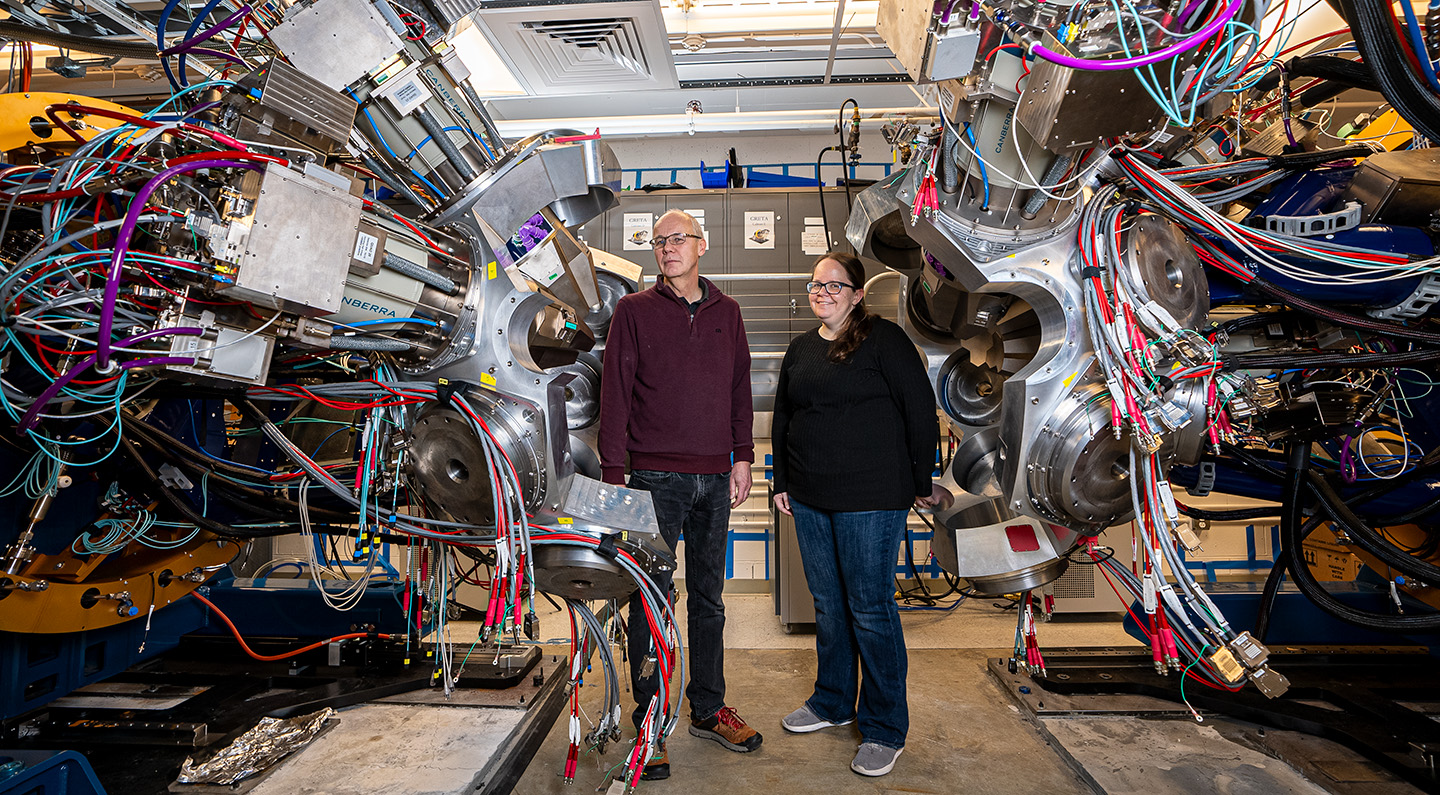
GRETA was assembled at Berkeley Lab and is now ready to ship to the Facility for Rare Isotope Beams (FRIB), a DOE Office of Science user facility at MSU. There, researchers will install and commission the device, adding additional detector modules as they become available. GRETA is built for flexibility as well as sensitivity, and will move to different stations at FRIB (and later Argonne) to use particle beams of different types and energies.
To get a glimpse inside the nucleus, researchers will smash a particle beam into a target placed at the center of GRETA, briefly creating energetic, rare atoms. GRETA's sensitive germanium detectors measure the 3D paths and energies of emitted gamma rays, particles of light made as an excited atom returns to a more stable state. That data can reveal all sorts of interesting insights.
This timelapse video shows the construction and testing of GRETA at Berkeley Lab. (Credit: GRETA collaboration)
For example, researchers can probe the structure of rare and short-lived isotopes, atoms with different numbers of neutrons compared to the more common versions of the elements. FRIB will be able to create and study more than 1,000 new isotopes. Scientists can also test the limits of how many protons and neutrons a nucleus can hold, exploring "the drip lines," the point beyond which neutrons or protons can no longer bind within the nucleus and instead "drip" away.
Other experiments will study pear-shaped nuclei, a way to search for subtle violations of fundamental symmetries in nature and explore why our universe is made mostly of matter (instead of antimatter). Researchers will also use GRETA to shed light on the processes within stars that forge elements heavier than iron.
"Gamma-ray spectroscopy is among our most powerful tools to learn about the fundamental nature of the atomic nucleus," said Heather Crawford, a scientist at Berkeley Lab and deputy project director for GRETA. "The excited states and gamma rays are a fingerprint for each isotope. GRETA is the world's most powerful microscope to examine these fingerprints and answer questions about the nucleus and the forces that govern it."
A Sphere of Germanium Crystals
GRETA is an expansion of an earlier project, GRETINA, that used 12 germanium detector modules to capture gamma rays. GRETA will bring the total to 30 modules, completing a full sphere around the target and vastly increasing the instrument's tracking capabilities. By catching more gamma rays, researchers will get a more accurate picture of what's happening in the nucleus - and more quickly.
Each detector module is made of four tapered hexagonal crystals of ultra-pure germanium roughly the size of a 10-ounce coffee cup. The germanium crystals are such specialized and difficult pieces to make, only about four detector modules can be produced every year. Once tightly packed together and cooled to cryogenic temperatures (around negative 300 degrees Fahrenheit), the crystals are exceptionally good at measuring the energy and position of gamma rays, enabling researchers to reconstruct their interactions in the crystal.
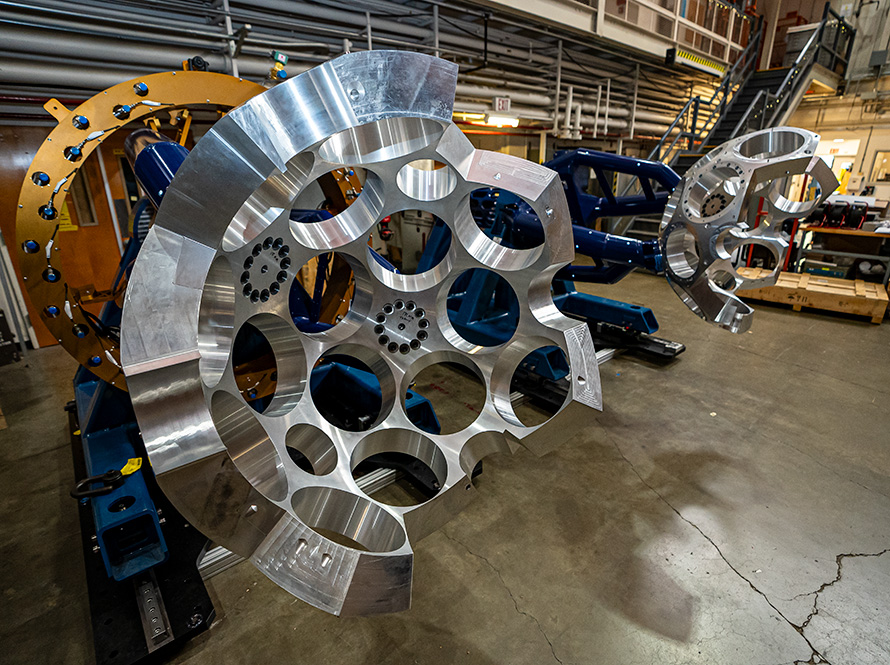
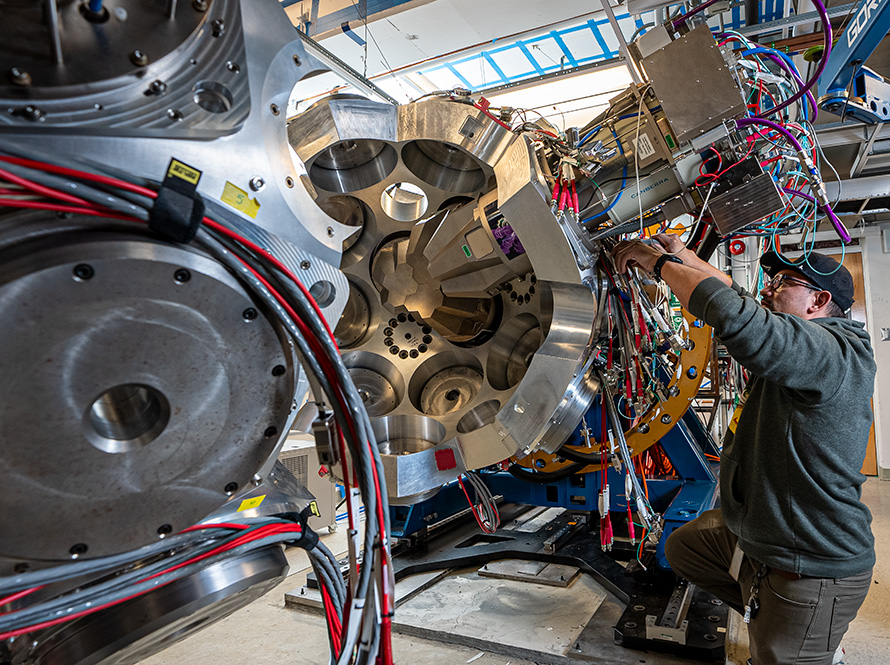
GRETA's backbone is a complex, meter-wide aluminum frame that supports the germanium detectors and electronics. The sphere is built in two halves that separate, opening space for researchers to change out targets at the center of the instrument. To make sure the sphere comes back together seamlessly, the base plate and rails are aligned within one millionth of an inch. Each half can also rotate, allowing researchers to safely install the detector modules before moving them into their final orientation for operations. The team put the support assembly through its paces with dummy weights last year before beginning integration of the other components.
Fastest Gamma-Ray Detector in the West
A key part of the project was to design compact and efficient new electronics and a dedicated computing system for GRETA. The new electronic system can perform with up to 50,000 signals per second in each crystal, and a dedicated computing cluster will process up to 480,000 gamma-ray interactions every second in real time. Tests this spring showed GRETA surpassing its design goal, processing as many as 511,000 gamma-ray interactions per second.
GRETA is also a potential first use case for an accelerated data pipeline called DELERIA, a new software platform for streaming enormous amounts of data at high speeds. Researchers will be able to transfer data through DOE's high-speed network, ESNet, to be crunched at supercomputing facilities off-site and returned almost immediately. That rapid feedback will help researchers optimize their experiments as they take place even without a dedicated computing cluster.
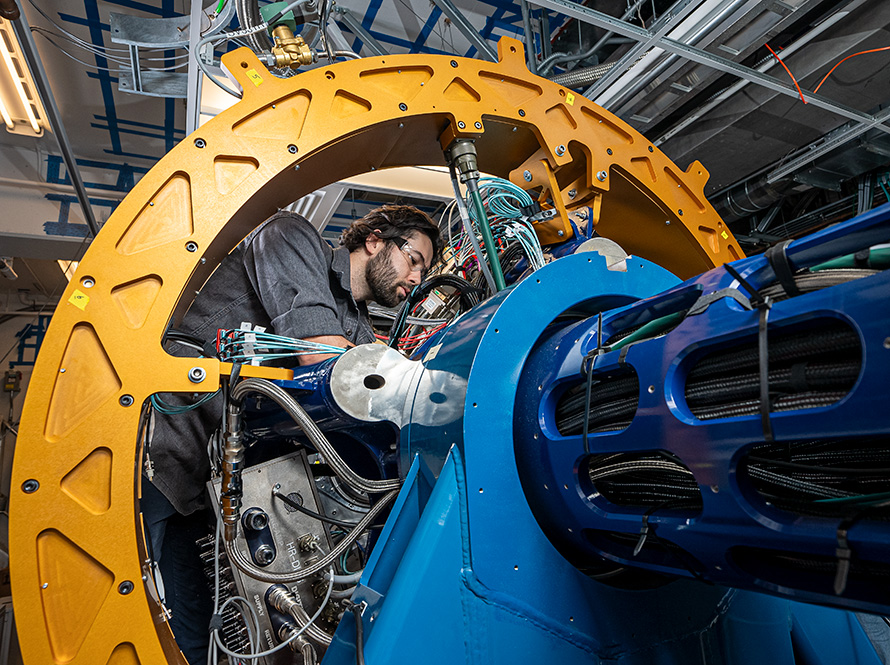
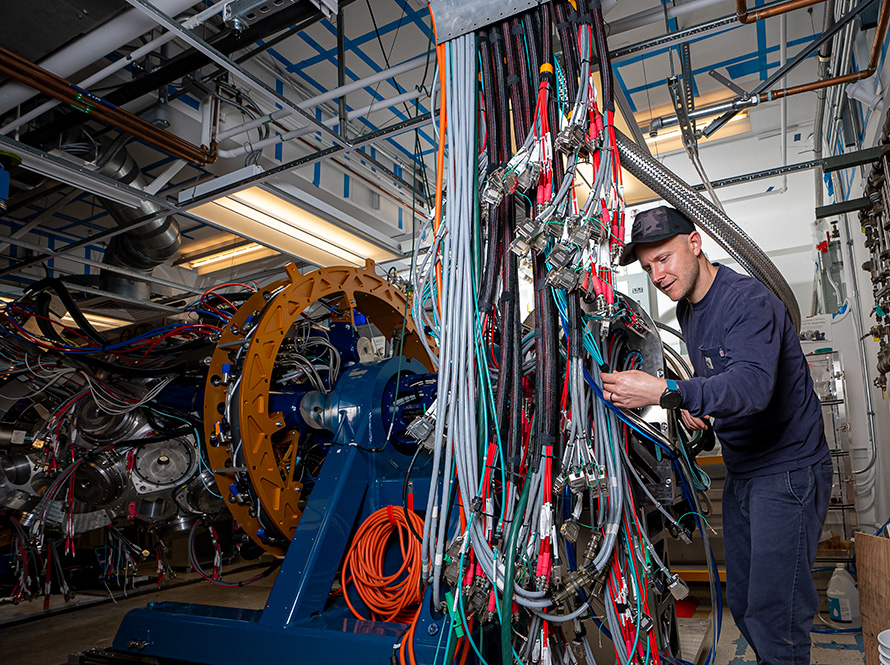
GRETA will incorporate GRETINA's detector modules and replace the instrument as the flagship gamma-ray detector at FRIB. The project team will ship the instrument to FRIB this summer, with installation expected in the fall and first experiments to begin in 2026.






